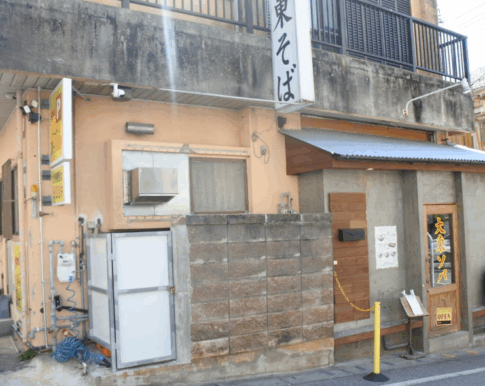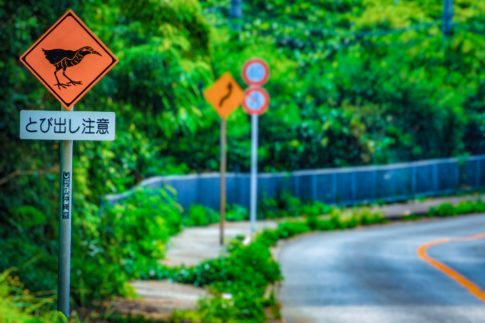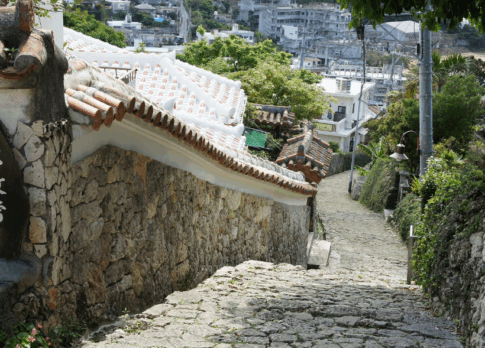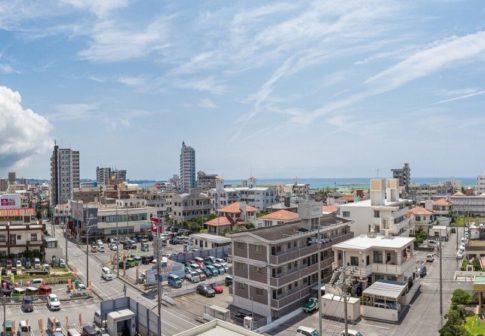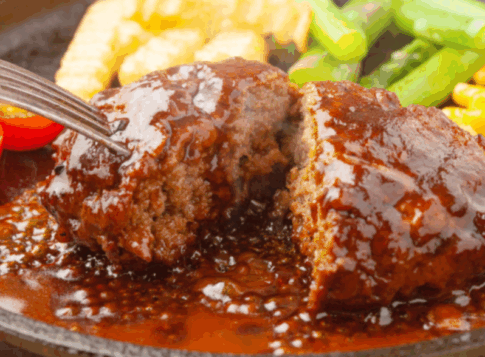At Shimoji Soba, you can enjoy “Tojin Soba,” which is the root of Okinawan soba.

Located near Shikinaen Garden, Shimoji Soba is an Okinawan-style private house that has been renovated into a restaurant.
The restaurant has a nostalgic atmosphere with its Japanese-style room and chabudai (tea table).
The menu at “Shimoji Soba” includes not only standard Okinawa soba, but also “Tojin-soba,” which is said to be the origin of Okinawa soba. Toujin-soba” is a recreation of the early Okinawa soba that has become obsolete. It is fun to compare it with the standard Okinawa soba because it has a completely different taste from Okinawa soba.
It is one of the most valuable restaurants in the Shikinaen area, as there are not many restaurants in the area.
Point 1: You can enjoy the atmosphere of a typical Okinawan private house.

Inside Shimoji Soba’s restaurant is a Japanese-style room with tatami mats covered with goza (straw mats), a chan dai (tea table), and a TV.
Orders are placed on a whiteboard with a magnet. Water and coffee are self-service, and when you are finished eating, you put your bowl down at the return slot.
The self-service atmosphere makes you feel as if you are visiting your grandmother’s house, which gives you a nostalgic feeling.
The relaxed atmosphere goes perfectly with the simple Okinawa soba.
Point 2: Easy to stop by before or after visiting Shikinaen
Shikinaen Garden is an attractive sightseeing spot with beautiful gardens, but eating and drinking are prohibited inside the garden.
There are no eating and drinking areas or vending machines on the parking lot side, and there are few restaurants in the area.
Shimoji Soba is located just a short distance from Shikinaen in the direction of Nambu-hara, so it is easy to stop by in combination with Shikinaen.
Shikinaen is much larger than expected and there is a lot of walking, so it is very convenient to have an Okinawan soba restaurant nearby where you can enjoy a casual meal.
Point 3: You can eat “Tojin-soba,” the root of Okinawa soba.

There are various theories about the origin of Okinawa soba, but one theory is that a Chinese chef offered “shina soba” during the Meiji period (1868-1912), which became so popular that soba was widely made in Okinawa.
Unlike today’s salt-flavored Okinawan soba, the soy sauce-based flavor of that time was used. Although it seems to have fallen into disuse since then, “Tojin Soba” is a reproduction of the early Okinawa Soba.

You will be surprised by the dark-colored soup, which is different from Okinawan soba. You can feel the sharpness of the soy sauce in the sauce rather than the taste of the soup. It tastes different from both Okinawan soba and ramen and is delicious.


